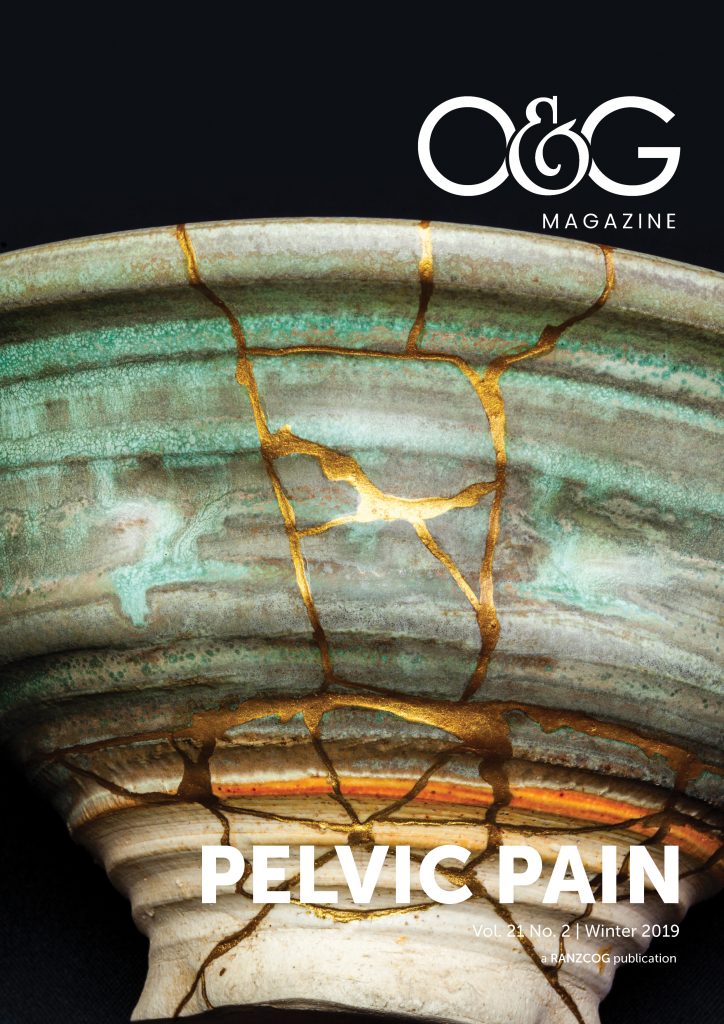It’s an outrageous question, and it’s meant to be outrageous; however, it sets the state of mind when approaching pelvic pain. Too many colleagues will ‘look for endometriosis’ rather than ‘look for pain’. That’s fundamentally wrong in the context of our current understanding of pain. The answer to the question ‘Does endometriosis really cause pain?’ is ‘yes, it can, but…’ Pain is very much like haemostasis, it involves a cascade of events, with the pain cascade the more complex one. One can argue that endometriosis is merely a variation of normal. The tissue is ‘normal’, it belongs to the patient and in most cases behaves in a predictable physiological manner. Why the endometrial tissue ends up in the wrong place is still a mystery. How the tissue in the wrong place, or not, can lead to pain is far better understood now than a few decades ago.
Endometrial tissue can trigger inflammatory and immune responses through its activity, such as release of prostaglandins. Regardless of location, this can trigger pain. Peripheral receptors are triggered, a signal in the sympathetic nervous system is generated, multiple connections occur in the pre-vertebral chain, the spinal cord and finally the brain. The list of factors influencing this cascade of neurotransmission is long and unfinished.
One important element, which influences the individual’s response to a trigger, is the hormonal environment.1 Oestrogen is particularly active, not only in the direct trophic stimulation of the endometrial tissue, but also in the interpretation of the signal at a central level. Understanding the impact of oestrogens completely alters the approach to treating the patient with pelvic pain. When a patient presents with pelvic pain, it is as important to take a full pain history – to find out if she also suffers headaches, for instance – as it is to perform a thorough pelvic examination. Headaches can indeed also be significantly modulated by the hormonal environment. Manipulation of the hormonal environment, therefore, is and will remain an important element in the treatment of pain.
Pain is normal. In days gone by, this would seem like another outrageous statement, but not in the context of our current understanding of pain. The function of pain is to protect us from danger – it is one of our homeostatic mechanisms. Pain is the interpretation of a sensory signal by our brain and is designed to receive our full attention. And now the difficult part begins: how does the brain interpret these signals and determine how much pain to provide as the output? How significant is that signal? What does it mean for me now, in context, according to my past, and what does it mean for my future? The brain will do this assessment amazingly quickly. These questions come up every day and this question is also one of the main issues a patient brings to the consultation: why am I hurting? Often, finding and understanding the answer to that question is enough to ‘treat’ the pain. Therefore, it is exceedingly important to answer the question ‘does endometriosis really cause pain?’ correctly. Telling the patient that endometriosis always equals pain is wrong and only reinforces the quest for more surgery – and poorer results.
We need to change our treatment algorithm. That’s not so outrageous a statement. Great progress has been made over the past decades in approaching resection of endometriosis using laparoscopic techniques. However, we need to move laparoscopy for resection of endometriosis off its pedestal and place it in the context of pain management of the whole person and stop promoting surgery as a cure for pelvic pain.2
The main impediment to a change of attitude toward treating pelvic pain is the stubborn belief among physicians, as well as the public at large, that surgery can remove pain. In many cases, surgery will indeed improve the patient’s symptoms, but rarely does it actually ‘cure’ the pain. As a matter of fact, laparoscopic surgery itself can turn into an important trigger for pain, as any surgery can trigger post-surgical neuropathy. At the first laparoscopy for resection of endometriosis, the surgeon removes one element in the cascade of pain genesis, but introduces a new one – the surgery itself. With each subsequent surgery, the weight of the introduced trigger threatens to tip the balance in favour of greater, rather than reduced, pain triggers and leads to an even more sensitised nervous system. A better understanding of the pathophysiology of pain requires education. Improved pain education is needed within the curriculum of medical schools. Improved pain education is needed among surgical specialists. Improved pain education should reach the general public.3
Once it is understood that it’s not the location of the tissue, but the interaction of the tissue with its environment regardless of location, that is at the origin of the pain cascade, then it opens up a whole new world of possibilities for treatment. Rather than feeling threatened, the physician-surgeon should embrace this opportunity of providing a greater positive impact on the patient’s health and wellbeing. The lack of understanding of pain pathophysiology is reflected in the attitude of physicians toward allied health. How could osteopathy or physiotherapy or psychotherapy possibly remove the pain from endometriosis? Posited that way, it does seem impossible: ectopic endometrium will not vanish after a session of pelvic floor muscle manipulation. Within the context of pain pathophysiology, where pain triggers do correlate with aberrant muscle contractions, it becomes quite understandable, however. The pervasive false belief that surgery cures pain is reflected in the medical insurance and government reimbursement systems. The rebate for surgery still dominates, whereas reimbursement for pain education is essentially non-existent. Yet, education is at least equally important in the management of chronic pain. Change is on its way. A Medicare Benefits Schedule Review Task force was convened in 2018 and its recommendations will be published this year. It is anticipated that emphasis will be shifted away from surgical interventions towards a more holistic approach.
References
- K Vincent, J Moore, S Kennedy, J Tracey. Steroid hormones and pain-related brain activity and functional connectivity in healthy women. Lancet. 2014;383(1):S104.
- ET Carey, CE Martin, MT Siedhoff, et al. Biopsychosocial correlates of persistent postsurgical pain in women with endometriosis. Int J Gynaecol Obstet. 2014;124:169-73.
- NE Morone, DK Weiner. Pain as the fifth vital sign: exposing the vital need for pain education. Clinical Therapeutics. 2013;35(11):1728-32.





Leave a Reply